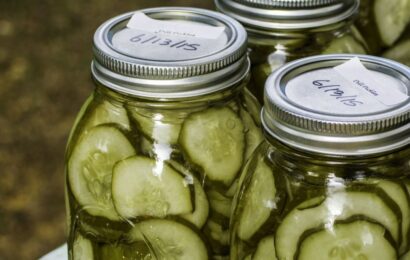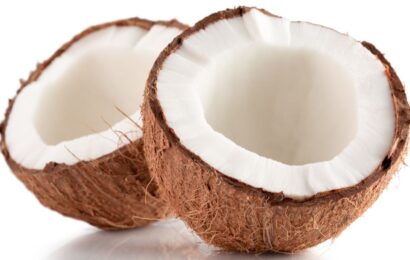Since childhood, most of us have been told to eat our vegetables. Nutrition guidelines continue to emphasize the importance of getting in recommended servings of both vegetables and fruit every day to promote good health and maybe ward off disease. But many people fall short of the recommended five servings of fruits and vegetables daily. Here’s where supergreens may come in. But what are they and do you need them?
Seeing green
Some of the most nutritious vegetables around are dark green, leafy vegetables such as kale, spinach, chard, and lettuce. Not only are these veggies rich in vitamins A, C, E, and K, they are packed with fiber and antioxidants, and even some minerals, such as iron, magnesium, potassium, and calcium, too. Their “superstar” status comes from providing an abundance of nutrients, which are thought to help protect against diseases such as colon, breast, and lung cancer; osteoporosis; and heart disease.
But if spinach and broccoli are not on your top ten list of vegetables, is there another way to ensure that you get important nutrients in your diet? Here’s where supergreens come in.
To get cutting-edge diabetes news, strategies for blood glucose management, nutrition tips, healthy recipes, and more delivered straight to your inbox, sign up for our free newsletters!
Why supergreens?
The term “supergreens” refers to cereal grasses, seaweed, and algae, as well as supplements that contain these ingredients.
Cereal grasses include wheatgrass, barley grass, oat grass and alfalfa grass. These are the young sprouts that grow into cereal grains. Despite being young, however, they have a similar nutrient profile (maybe even a great nutrient profile) to their dark green vegetable cousins. But the catch is that they aren’t digested all that well, so they are usually juiced or dried and pulverized into a fine powder. For example, if you frequent juice bars, you will likely see wheatgrass as an option to blend into your juice or smoothie. Cereal grasses are concentrated in nutrients such as vitamin A, vitamin C, calcium, iron, and protein (the nutrients vary by type of cereal grass).
In addition to vitamins and minerals, cereal grasses contain chlorophyll, which is a compound that gives plants their green color. It’s considered to be a powerful antioxidant, and it is often used, in supplement form, for treating or preventing health conditions such as chronic fatigue, fibromyalgia, liver problems, yeast infections, and arthritis. However, at this time research is lacking to support these claims.
Why algae?
Supergreens also include algae. Blue-green algae, or BGA, are a type of green bacteria that are found in both fresh water and salt water. Spirulina is a type of BGA that contains protein (containing all of the essential amino acids), calcium, iron, potassium, and magnesium, as well as vitamins A, C, E, and several B vitamins, too. BGA is naturally low in carbs and calories, and has practically no fat.
BGA is one of the most primitive life forms on earth and has been used as both food and medicine for centuries. Research indicates that BGA has certain health benefits. For example, according to an article in the February 2013 issue of the Journal of Medicinal Food, animal and human studies demonstrate “that edible BGA can be an effective natural product for improving blood lipid profiles and for preventing inflammation and oxidative stress.” Specifically, BGA can help to lower the risk of heart disease by lowering blood cholesterol and triglycerides, and may also help prevent non-alcoholic fatty liver disease (NAFLD). It’s also thought that BGA may support the immune system and suppress the growth of some viruses, and it may help relieve fatigue and improve exercise tolerance.
Spirulina might show some promise in terms of blood sugars and A1C. A study in the winter 2001 issue of the Journal of Medicinal Food looked at 25 subjects with type 2 diabetes who were randomly assigned to receive spirulina or to form a control group. The spirulina group was given 2 grams of spirulina daily for two months. After two months, the spirulina group had an “appreciable lowering of fasting blood glucose and postprandial blood glucose levels” as well as “a significant reduction in the HbA1C level.”
Getting your supergreens
You might be wondering if there is an easy way to get your supergreens without resorting to swigging pulverized cereal grasses or swallowing algae. Not surprisingly, supergreens are available as supplements, either in tablet or powered form. Sometimes called “greens powders,” these supplements may contain a multitude of ingredients, including leafy greens, seaweed, grasses, herbs, enzymes, mushrooms, fruits, and probiotics. Natural sweeteners, such as stevia, may be added to help blunt the grassy flavor.
Greens powders are generally mixed into liquids, such as water, smoothies, or juices. The calories and carbs vary from brand to brand but may contain anywhere from 25 to 45 calories and 5 to 6 grams of carbohydrate per serving. To keep the calories and carbs down, mix greens powders with water rather than juice or smoothies.
Benefits of greens powders
Greens powders contain vitamins, minerals, and antioxidants, so they can be an option for people who dislike or have a hard time getting enough vegetables and fruits in their diets. And some research points to health benefits of greens powders, such as lower blood pressure, heart disease, and possibly cancer, but it’s too soon to know if these claims are true.
Greens powders may also be helpful for athletes, people who have difficulty absorbing foods, and people who are recovering from surgery.
Safety of greens powders
Before you jump on the supergreens and greens powder bandwagon, do your homework and talk with your health care provider first. People who need to proceed with caution include:
- Those taking medications such as blood thinners, cholesterol-lowering drugs, and seizure medication.
- Pregnant or breastfeeding women.
- People with kidney disease.
- People with allergies to wheatgrass, green tea extract, or other ingredients found in greens powders.
- People with certain digestive conditions, such as irritable bowel syndrome.
- People who already take vitamin/mineral supplements or other types of nutritional supplements.
It’s important, too, to purchase a greens powder supplement from a reputable company that has had their product tested for quality. Look for a supplement that has been tested by USP, NSF, or Consumer Lab. Also, always read the ingredient list on a greens powder supplement, since ingredients do vary from supplement to supplement. Remember that supergreens and greens powders aren’t a replacement for whole foods, since these powders don’t contain all of the nutrients that you need. Finally, monitor your blood glucose levels if you start using a greens powder and let your provider or diabetes educator know if you notice changes in your blood sugars.
Want to learn more about eating well? Read “Strategies for Healthy Eating,” “Improving Your Recipes: One Step at a Time,” and “Easy Ways to Eat Better.”





